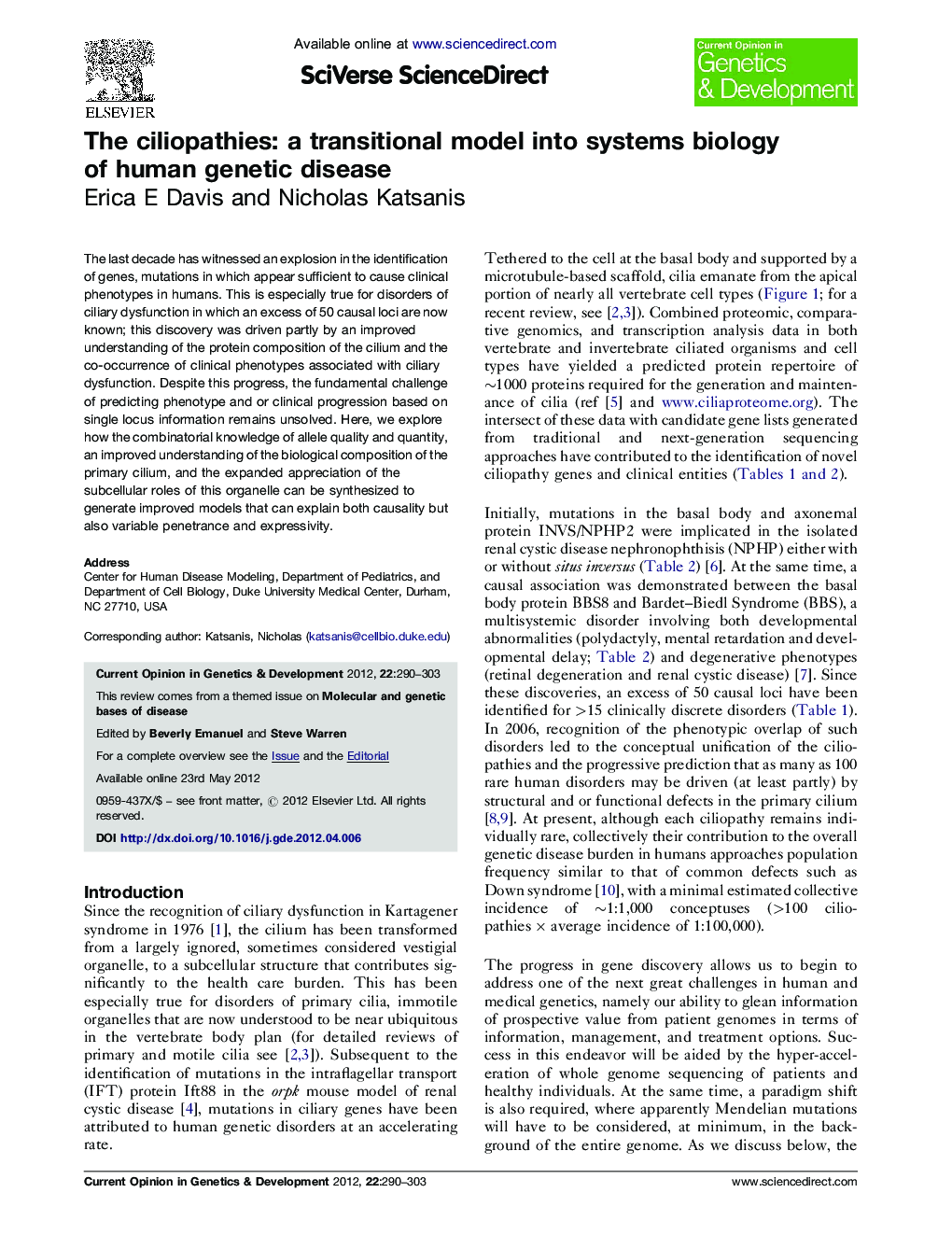| Article ID | Journal | Published Year | Pages | File Type |
|---|---|---|---|---|
| 5893437 | Current Opinion in Genetics & Development | 2012 | 14 Pages |
Abstract
The last decade has witnessed an explosion in the identification of genes, mutations in which appear sufficient to cause clinical phenotypes in humans. This is especially true for disorders of ciliary dysfunction in which an excess of 50 causal loci are now known; this discovery was driven partly by an improved understanding of the protein composition of the cilium and the co-occurrence of clinical phenotypes associated with ciliary dysfunction. Despite this progress, the fundamental challenge of predicting phenotype and or clinical progression based on single locus information remains unsolved. Here, we explore how the combinatorial knowledge of allele quality and quantity, an improved understanding of the biological composition of the primary cilium, and the expanded appreciation of the subcellular roles of this organelle can be synthesized to generate improved models that can explain both causality but also variable penetrance and expressivity.
Related Topics
Life Sciences
Biochemistry, Genetics and Molecular Biology
Developmental Biology
Authors
Erica E Davis, Nicholas Katsanis,
